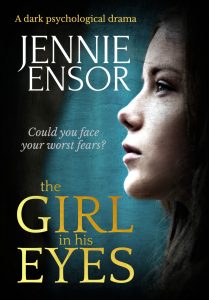Writing Fiction About Sexual Abuse And Sexual Violence In The Era Of #MeToo
 Sexual abuse is a challenging subject to write about in fiction. The sexual abuse of children is especially challenging given the strong emotions evoked by the topic. We are sensitive to the language used to describe sex, even more so when it involves transgression. Novels have been banned for overstepping the mark of what is acceptable – the list famously includes Lady Chatterley’s Lover and Lolita; many other novels have caused controversy, such as The End of Alice by A.M. Homes (explicit sexual description from the viewpoint of paedophiles) and Flowers in the Attic by V.C. Andrews (brother/sister incest).
Sexual abuse is a challenging subject to write about in fiction. The sexual abuse of children is especially challenging given the strong emotions evoked by the topic. We are sensitive to the language used to describe sex, even more so when it involves transgression. Novels have been banned for overstepping the mark of what is acceptable – the list famously includes Lady Chatterley’s Lover and Lolita; many other novels have caused controversy, such as The End of Alice by A.M. Homes (explicit sexual description from the viewpoint of paedophiles) and Flowers in the Attic by V.C. Andrews (brother/sister incest).
So, when writing fiction that contains sexual abuse or sexual violence, how sensitive to readers’ (and publishers’) sensibilities should an author be? Can a novel be too disturbing – or is it best to be fearless when writing about such disquieting subject matter?
In 1999 I began work on a novel, THE GIRL IN HIS EYES, about a young woman’s journey towards finding the courage to face up to her father, who abused her when she was a child, when she suspects he may have an inappropriate interest in the 12-year-old daughter of a family friend. Her mother also undergoes a psychological journey; the novel’s theme is women fighting back against the man who disempowered them.
Although the characters and plot are fictional, the novel was inspired by my own experiences of abuse as a child. I wanted to look at how child abuse impacts on a family, and what happens when the abuser is outed – the emotions and conflicts, differing views on seeking justice, etc. Paul, a married middleaged man becomes increasingly obsessed with Emma, whom he starts to lure into a trap (she’s desperate to become a model like the ones in her Glamour magazines).
Hopefully, the reader becomes aware of his distorted self-justification for his actions. I was interested not so much in what makes a child abuser want to do such terrible things, but in how he can get away with them and how he can live with himself. (As most abuse is committed by men and my character is male, I have used ‘he’.)
An early decision to make was from whose point of view I was going to tell the story. I knew from the off that I would write some chapters from the close third person viewpoint of the child abuser. (All of the novel is told in the close third person, the majority through the eyes of the protagonist, Laura, and her mother.)
To attempt to go into the head of a child abuser was risky, I knew, even if that character provides no explicit descriptions of abuse. The Dream Children by A.N. Wilson has sections in the close third person viewpoint of a middleaged paedophile. I found it disturbing despite the absence of explicit sexual description, due to the character’s persisting belief in the rightness of his abusive relationship with a child.
I certainly don’t think I’d be able to cope with the explicit descriptions in The End of Alice! On the other hand, I firmly believe fiction should not have any topic that’s off limits; the writer must stay true to themselves and their story. This may mean going to places that are challenging for readers, even inside the heads of paedophiles.
While writing my novel, I had to consider whether to censor myself in any way. I needed to write in a way that felt authentic, without skipping over any essential aspects of the characters and their actions, even if that might be disturbing for readers. I had doubts though whether readers would be able to cope with explicit descriptions of abuse, and I didn’t want to exclude readers.
In the final edits, I removed anything I thought might be too confronting for readers – or perhaps even triggering for abuse survivors. (For example, a description of how Emma smelled to Paul, which seemed too intimate.) I also made sure not to explicitly describe any sexual behaviour real or imagined from Paul’s point of view. He thinks inappropriately about Emma, but not in detail, e.g. imagines seeing her naked without her costume or putting a hand on her leg. However, I do describe a small number of sexual experiences that are especially significant to Laura, which she remembers from her childhood. I aimed to be clear enough to avoid confusion and euphemisms while carefully avoiding any over-explicit or gratuitous descriptions, always asking myself ‘Does this really need to be here?’
For example, here’s an extract from chapter one of THE GIRL IN HIS EYES, from Laura’s viewpoint:
Her father comes over and sits down beside her on the grass. She glances up, thinking he’s going to talk to her. But his face is closed down, a mask hiding his normal face.
He begins to stroke the back of her thigh. Gently, not like when he used to tickle her. She looks up from her book, confused.
‘What are you doing?’
He doesn’t reply. Instead, he slips the strap of her swimming costume off her shoulder and clamps his hand over the small mound of her breast. She is cold. She can’t move her tongue. It’s stuck inside her mouth, useless. Her heart hardens in her chest like a big stone. He explores her breast with his fingers, as if it belongs to him.
‘Dad, stop it.’
It is as if she hasn’t spoken.
Silently, she prays for him to stop. If only she could get up and run away. But she is unable to move. Her entire body has turned to stone.
Less is more applies particularly to this subject, I think; a few important details with much left to the readers’ imagination can have far more impact than a deluge of words that may disgust or horrify. For example, in The Roanoke Girls by Amy Engel – a beautifully written, moving novel – there is little or no actual description of sexual abuse. For example, there’s a shocking moment when the narrator discovers two characters in bed together, and all her fears about the true nature of their relationship are confirmed. The sensual, evocative language used feels oddly at variance with the content. One small detail makes it clear they’ve had sex.
“Her head on his chest, his arms wrapped around her, their legs entwined. His pale feet, usually covered by boots, her sun-brown toes, the nails painted bubble-gum pink. The summer breeze wafted the pale blue curtains inward, blew the earthy scent of sex into my face, ruffled the ends of Allegra’s hair.”
The current UK inquiry into child sexual abuse recommended recently that we discuss this topic more openly; this might well encourage victims to speak out earlier and prevent some children from becoming victims. I hope my novel can play a small part in this – along with other writing being published.
The best of luck to all writers tackling this daunting, emotionally-charged subject! THE GIRL IN HIS EYES took quite a few years to be published – this task probably wasn’t helped by the subject matter. I’m grateful that soon after I gave up trying to find an agent, my novel was taken on by Bloodhound Books. Hopefully now we’re in the era of the #MeToo movement and the Harvey Weinstein disclosures, and trying to learn from the Jimmy Saville affair, publishers will be increasingly willing to take on fiction that involves sexual abuse. My advice is to go, fearlessly, into the darkest places you need to explore… but don’t go any further.
—
A Londoner with Irish heritage, Jennie Ensor began her writing career as a journalist, obtaining a Masters in Journalism (winning two student awards) and covering topics from forced marriages to mining accidents. She isn’t afraid to tackle controversial issues in her novels, either – Islamic terrorism, Russian gangsters and war crimes in her debut Blind Side (Unbound, 2016); child abuse and sexual exploitation in her latest book THE GIRL IN HIS EYES, a dark psychological drama published by Bloodhound Books 18 September 2018.
Jennie Ensor’s short story ‘The Gift’ was placed in the Top 40 of the Words and Women national prose competition; her poetry has appeared in many publications, most recently Ink Sweat and Tears. In her spare time she cycles, sings in a chamber choir and dreams of setting off on a long trip with her Kindle.
Author Links
Author website & blog: https://jennieensor.com
Author Facebook page: https://www.facebook.com/JennieEnsorAuthor
Twitter: https://twitter.com/Jennie_Ensor
Instagram: https://www.instagram.com/jennieensor/
Goodreads: https://www.goodreads.com/author/show/15511227.Jennie_Ensor
Publisher website: http://www.bloodhoundbooks.com
About THE GIRL IN HIS EYES
 “An addictive story that will grab your attention from the very beginning!” – J.A. Baker, best-selling author of The Other Mother
“An addictive story that will grab your attention from the very beginning!” – J.A. Baker, best-selling author of The Other Mother
“Powerful, hard-hitting and an absolute must-read.” Sarah Hardy – By The Letter Book Reviews
Her father abused her when she was a child. For years she was too afraid to speak out. But now she suspects he’s found another victim…
Laura, a young woman struggling to deal with what her father did to her a decade ago, is horrified to realise that the girl he takes swimming might be his next victim. Emma is twelve – the age Laura was when her father took away her innocence.
Intimidated by her father’s rages, Laura has never told anyone the truth about her childhood. Now she must decide whether she has the courage to expose him and face the consequences.
Can Laura overcome her fear and save Emma before the worst happens?
What everyone is saying about The Girl In His Eyes
“Once I started reading this book, I could not put it down. This is a fantastic read.” Lee Husemann – Reviewer
“LOVED this book!! I could not put it down from the first page to the last.” Tara Jill – Reviewer
“I was hooked from the beginning” Laura Hundley – Reviewer
“an edgy, compulsive read with a disturbing sense of unease that doesn’t let up until the end.” – Linda Huber, best-selling author of Baby Dear
“This book was a rollercoaster of emotions” Savanah Bourgeois – Reviewer
“An addictive story that will grab your attention from the very beginning!” – J.A. Baker, best-selling author of The Other Mother
“A brave and important book that unflinchingly tackles subject matter lesser authors struggle with. Ensor ensnares her readers in a cold, clammy grip of dread and helplessness. Simply riveting.” Kerensa Jennings, author of bestselling literary thriller Seas Of Snow
The Girl In His Eyes is a dark and compulsive psychological thriller, which will appeal to fans of authors like Katerina Diamond, Dennis Lehane and B A Paris.
Category: Contemporary Women Writers, On Writing































Ms. Ensor, I just stumbled across your article. It was very helpful to me. I just attended a Writer’s Police Academy and now formulating my plot of a young girl who experienced a life with her pedophile father. I have written and co-authored non-fiction but, this will be the first time to incorporate both genres.Again, thank you for your article it has been helpful. I will be ordering your book.